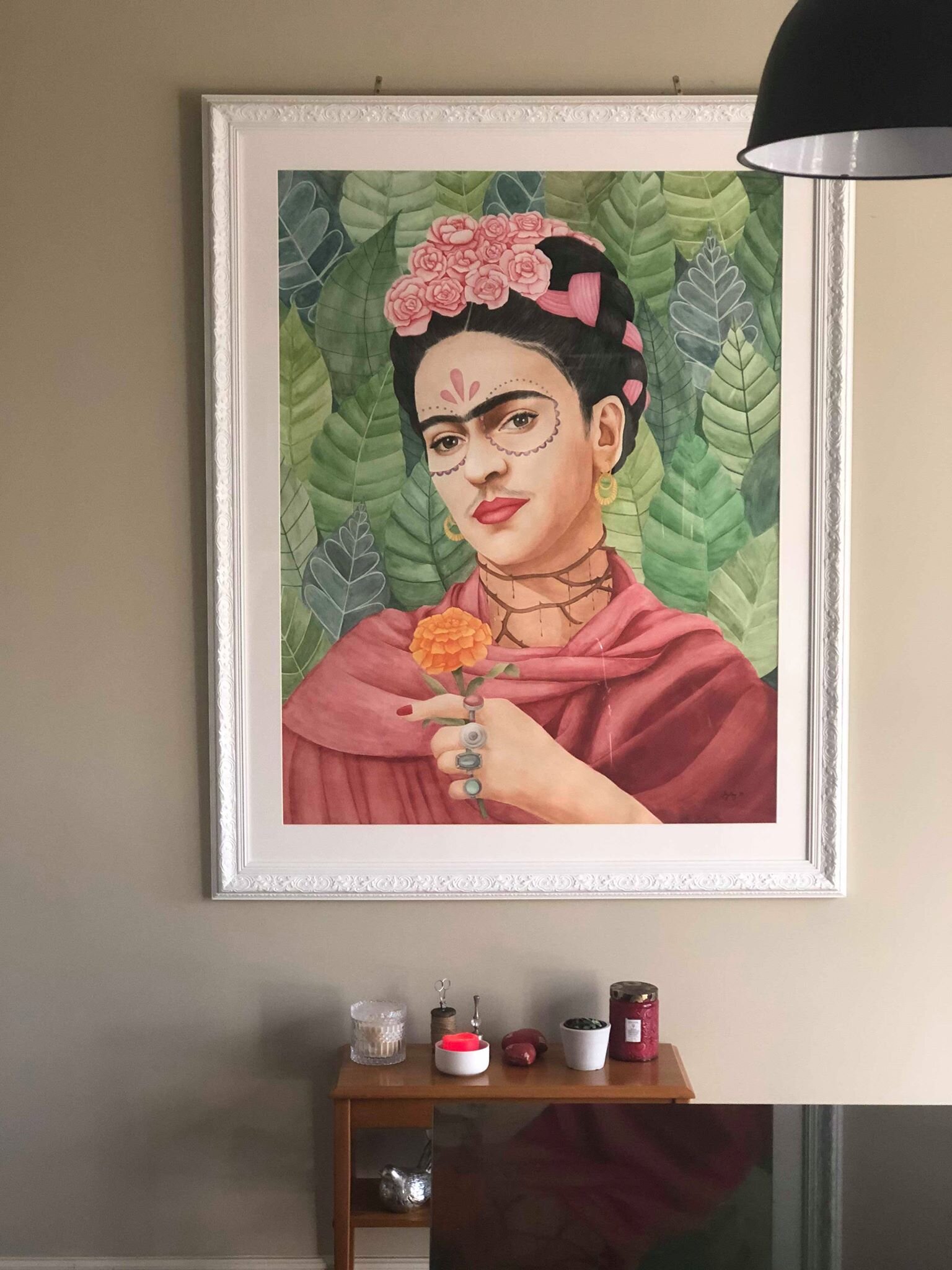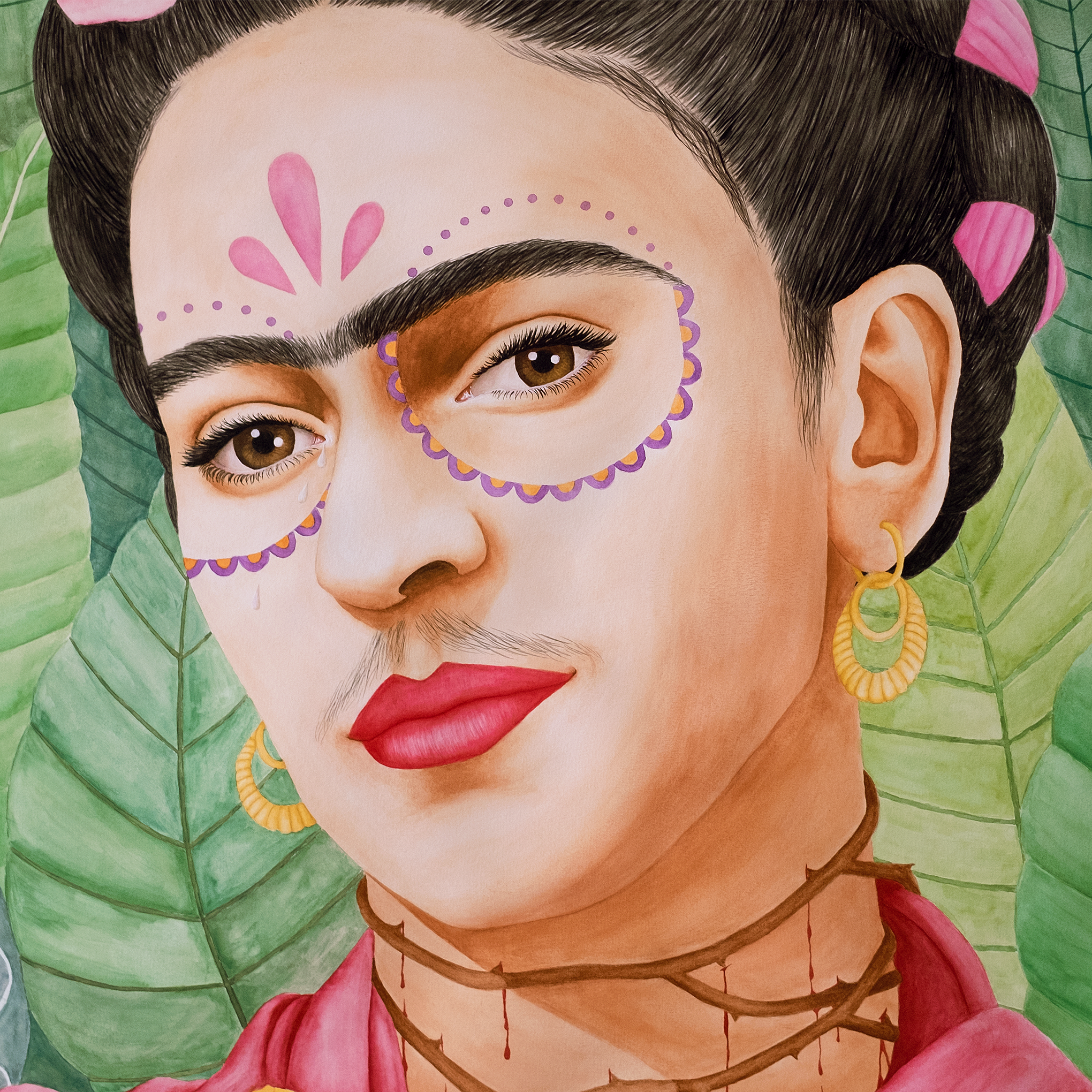Frida Kahlo
Some wonderful clients from New Zealand contacted me to create a large portrait of Frida Kahlo, and I obviously jumped at the idea! There are not many artists (especially female artists) that have not been influenced by Frida Kahlo’s work and life. I was influenced by the beautiful Mexican festival Día de los Muertos and Frida’s own self portraits when creating the work.
The painting is 1.3 x 1m, gouache on paper.
My clients chose a mordern ornate white frame to accompany the portrait. It is a beautiful addition! Framing always completes the look of an artwork.
SYMBOLISM:
Colours - each colour in the work was chosen based on their meaning in the Día de los Muertos festival and a page from Frida Kahlo’s diary depicting her use of colour and their meanings.
Día de los Muertos decorations around her eyes, complete with large flower crown that is both used in the festival when dressing up as La Catrina, and quintessential Frida dress.
Three tears falling from Frida’s right eye (left as we see the artwork), symbolising physical suffering and emotional turmoil. Tears are used in her paintings “The Broken Column” 1944, “Self Portrait in Medallion” 1948, and “Diego and I” 1949.
Thorns wrapping Frida’s neck are used in her paintings “Self Portrait with Thorn Necklace and Hummingbird” and “Self Portrait, Dedicated to Dr Eloesser”, both 1940. Once again these thorns have been included as a reminder of the suffering she experienced.
I have depicted Frida wearing her favourite magenta/pink Rebozo (traditional Mexican scarf) She wears this in a photograph taken by Nickolas Muray called “Frida Kahlo with Magenta Rebozo, ‘Classic’”, 1939. She is adorned with earrings and rings that appear in photos and self portrait. Rings were usually worn on her left hand as rings on her right hand interfered with her painting.
She is holding a marigold (or cempazuchitl) flower. She depicted a small child holding a marigold flower in her painting “Girl with Death Mask - She Plays Alone”. The child is thought to be representing Frida herself as a young girl. The marigold flower is used in the Día de los Muertos festival to guide the spirits of the dead back to their families. It has been included in this portrait as a symbol of Frida’s portrait of the child and to represent how Frida often returns from death to impact people all over the world today.




